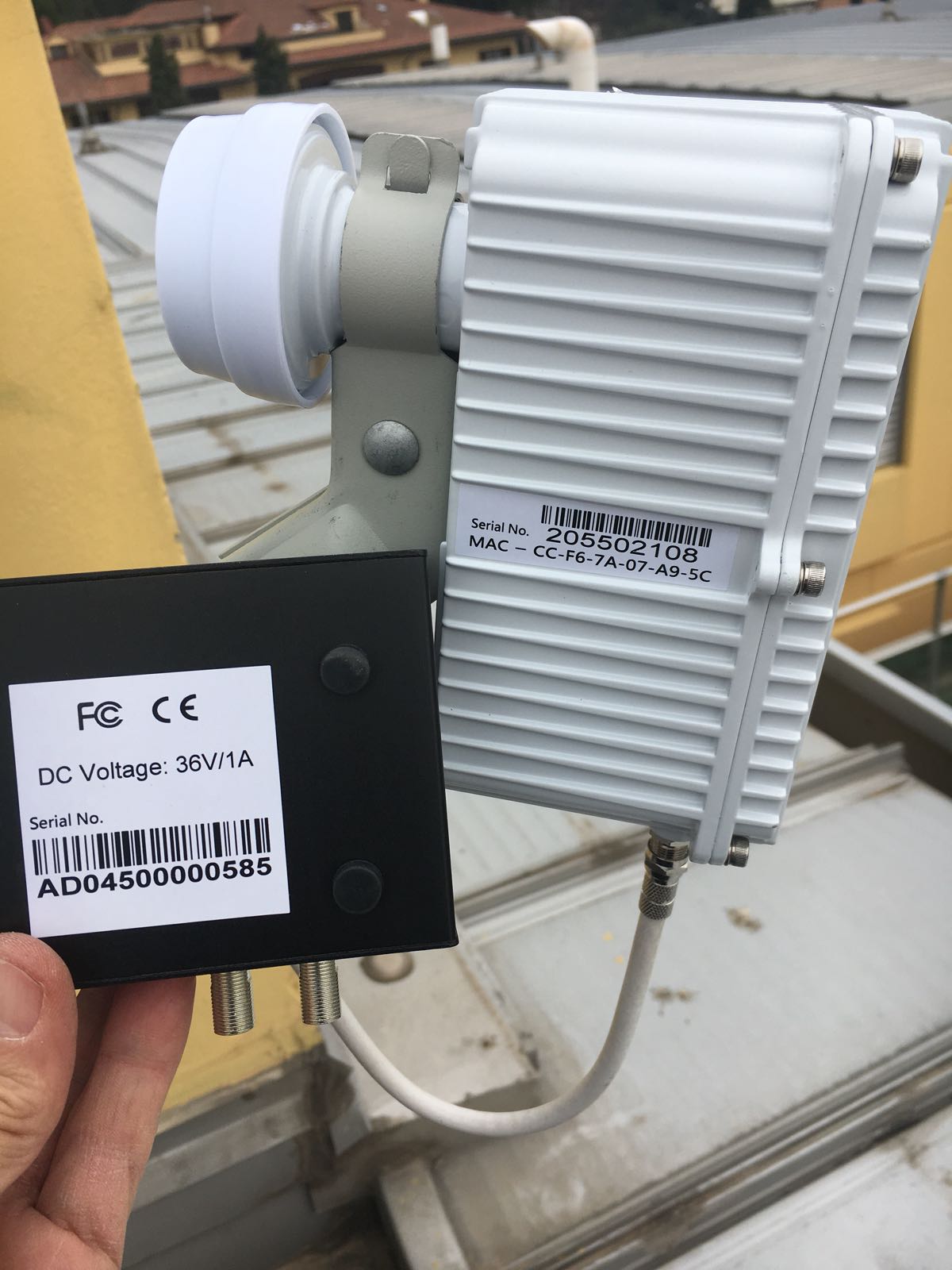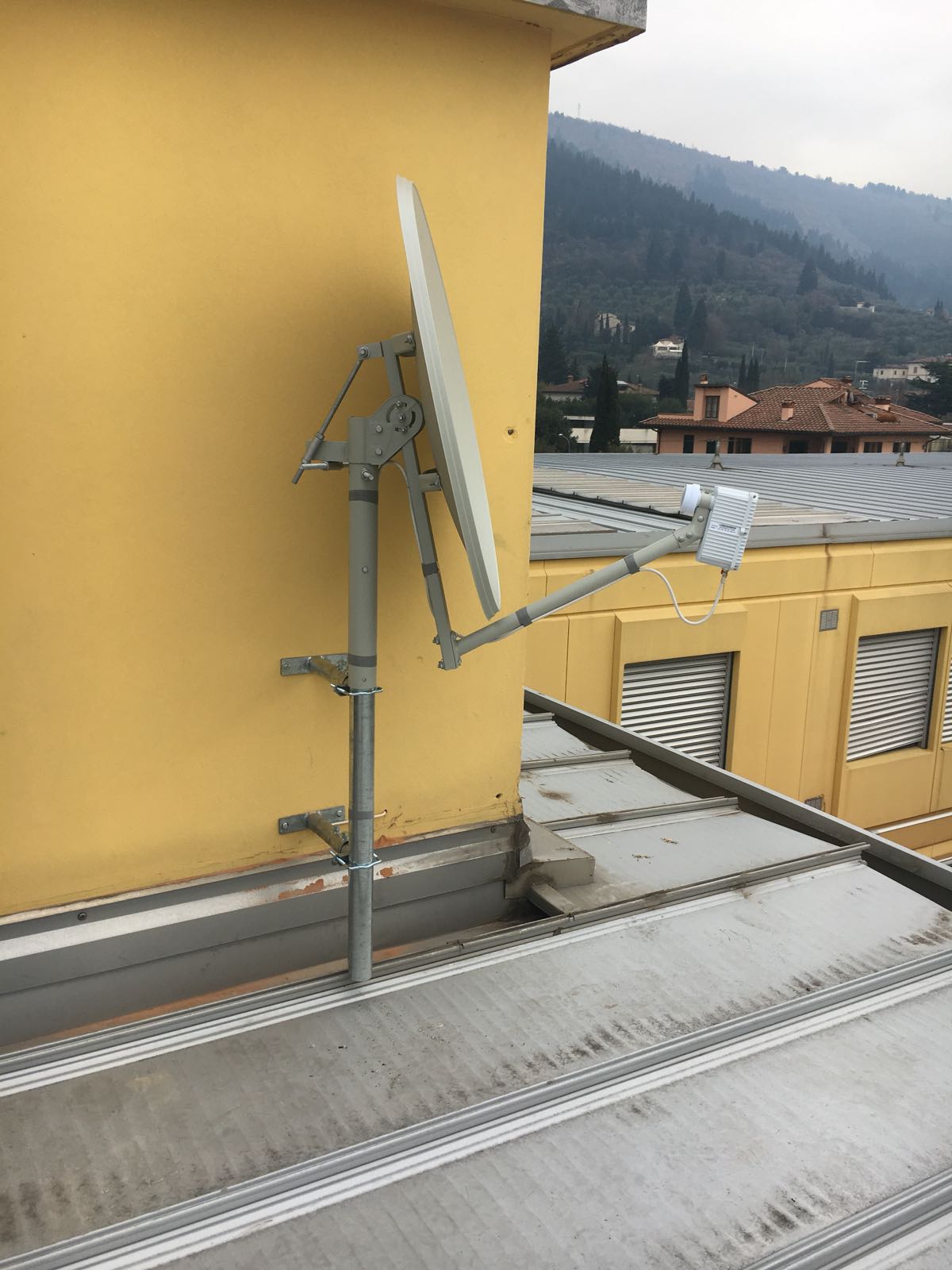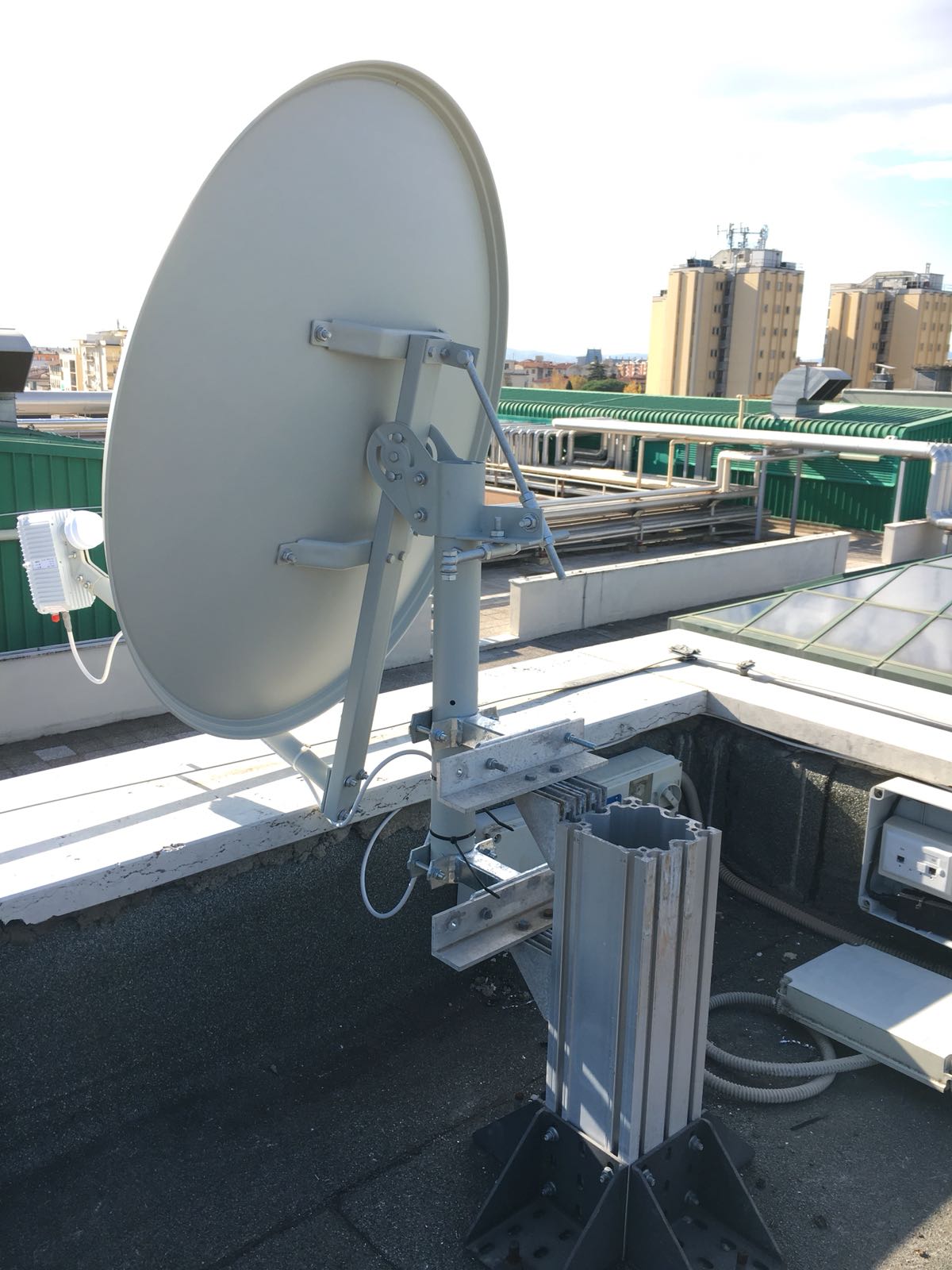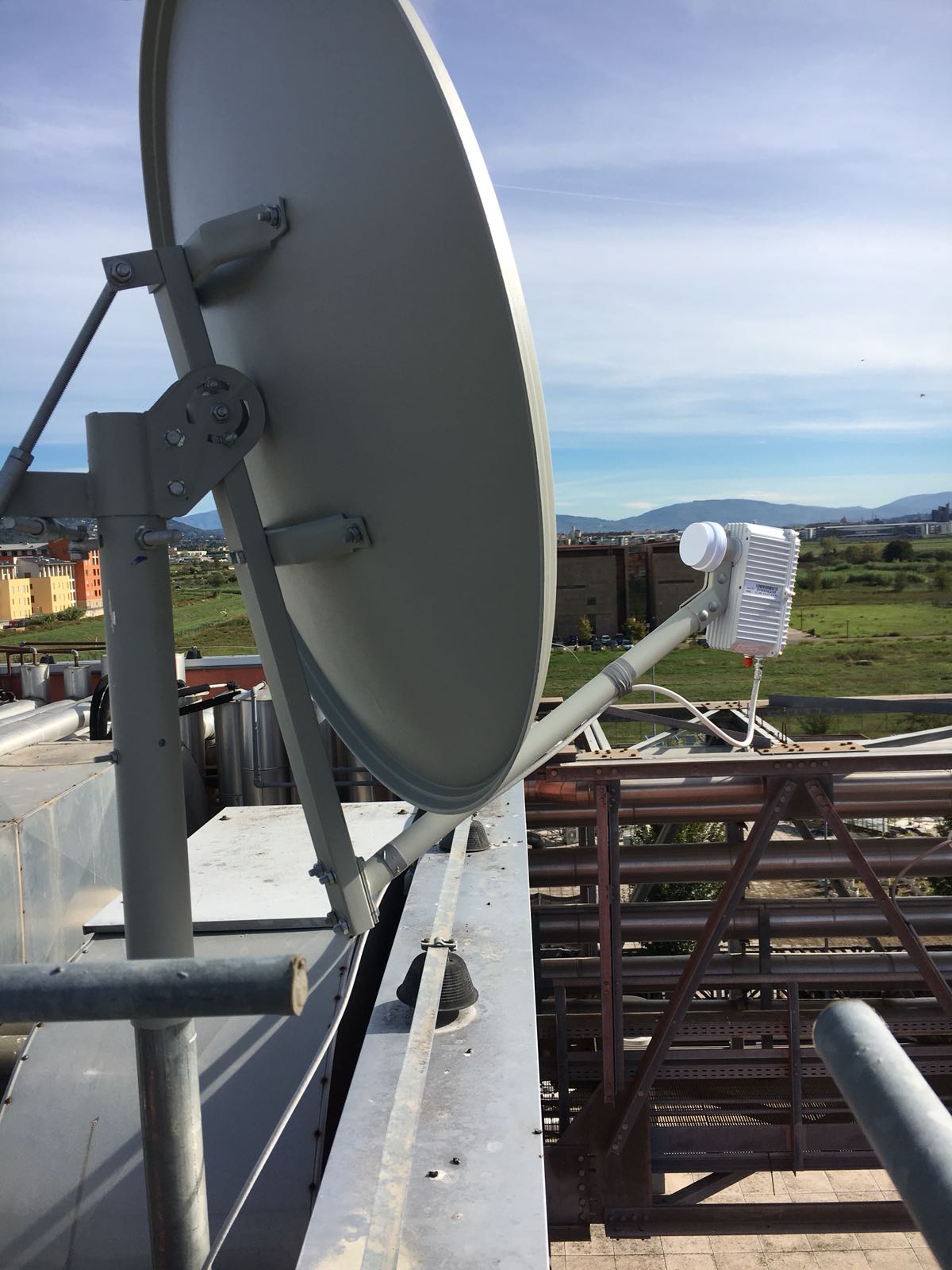SmartLNB
Description
The SmartLNB is an innovative rain sensor based on the observation of the attenuation of signals transmitted via satellite. It is an Interactive Satellite Terminal (IST) whose original use is to provide a narrowband very low cost communication channel via satellite for applications that don't require high data rates (e.g. IoT monitoring, televoting, etc.). In the last few years some SCORE partners (MBI, UNIPI, LAMMA, CNR, PROGECOM) worked on innovative methods to use this device as a rain probe: by measuring the attenuation of the signal received by the IST from the satellite, through a patented algorithm, it is possible to get an estimation of the rain rate in almost realtime. The estimate is quite accurate at both low and high rain rates, which makes it a convenient solution for rain monitoring with estimates comparable to professional much more expensive sensors. In addition, the IST provides a communication channel, that can be used to send data from other sensors. SmartLNBs can be deployed in locations where terrestrial connectivity is not available or weak, since they make use of satellites for data transmissions of their measurements and data. Additional costs are associated with training and/or professional satellite TV installer.
Monitored Parameters:
Hazards:
✓ Relevant to WP3 models ✓ Relevant to the EWSS
€400.00
Minimum Quantity : 1
| Accuracy (error of the measurements) | Unit of measurement | Data Refresh Time (mins) | Wi-Fi Connection | 4G Connection | External Power Supply | Documentation |
|---|---|---|---|---|---|---|
| 0.1mm/hr | mm/hr | 1 | False | False | True | See available docs for SmartLNB |
| Reference Partners | Project Name | Project Year | Reference Paper | Minimum Purchase | Spatial Density |
|---|---|---|---|---|---|
| MBI | NEFOCAST | 2018 | Reference paper | 1 | 1 |
| Purchase operations complexity | Assembly/Calibration Operations Complexity | Deployment operation Complexity | Deployment Cost | Data Analysis Operations Complexity |
|---|---|---|---|---|

| 
| 
| 
| 
|
| Citizen Science Activities Complexity | Assembly Public Involvement | Deployment Public Involvement | Data analysis Public Involvement | Target Users |
|---|---|---|---|---|
| Easy | Limited - The unit comes already completely assembled; no preliminary operations prior to the installation are needed | Limited - The deployment of a smart LNB requires the presence of a parabolic reflector antenna, like common antennas for receiving satellite broadcast TV. The sensor installation requires a technician and typically cannot be made by citizens without the required expertise. Associations of citizens or public institutions can offer the possibility to host smart LNBs on their roof and become a node of the rain monitoring network | Limited - Raw data as well as data processing will be made available from a service centre, but some coding experience is required to access and manipulate data. Schools can be involved in data analysis activities, and in particular vocational technical schools can be involved in simple data processing activities. Eventual training events for interested students can be envisaged - this must meet available resources. | local groups; local authorities |



